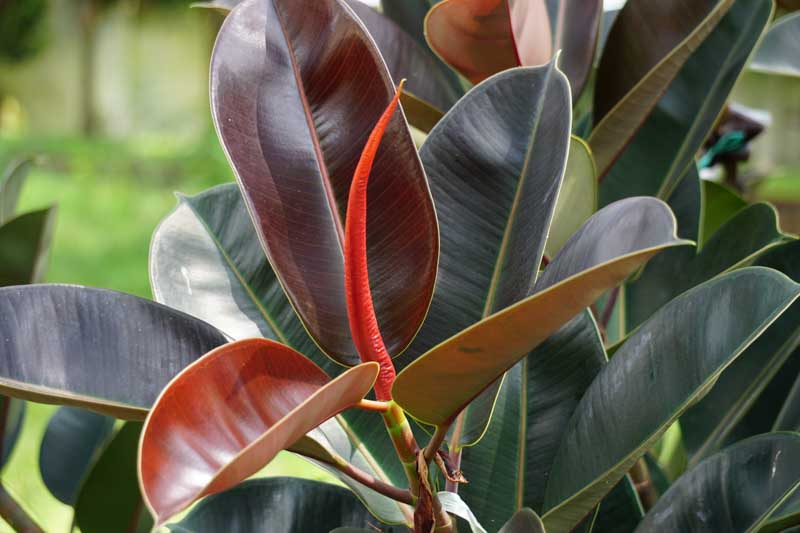Rubber Tree (Ficus elastica)
The Rubber Tree, or Ficus elastica, is a fascinating plant with a rich history and intriguing characteristics. Here are some interesting facts about this popular houseplant:
Historical Significance: Originally found in the rainforests of Southeast Asia, Ficus elastica was heavily sought after in the 19th century for its latex sap, which was used to make natural rubber. However, it was later surpassed by the Pará rubber tree (Hevea brasiliensis) as the primary source of commercial rubber.
Unique Aerial Roots: In its natural habitat, the Rubber Tree can develop striking aerial roots (like the Banyan Tree), which, over time, can grow into thick, woody trunks. This adaptation allows the tree to support its massive canopy and stabilize itself in the dense rainforest.
Air Purifying Abilities: Ficus elastica is known for its air-purifying qualities. It’s one of the houseplants identified by NASA’s Clean Air Study as effective in removing toxins like formaldehyde, xylene, and toluene from indoor air.
Cultural Symbolism: In some cultures, the Rubber Tree symbolizes wealth, abundance, and happiness. Its robust and evergreen appearance makes it a popular plant in Feng Shui, believed to bring positive energy into the home.
Varieties and Cultivars: Besides the classic dark green variety, there are several striking cultivars, such as Ficus elastica ‘Ruby’, which has pink and white variegated leaves, and ‘Tineke’, with its cream, green, and pink foliage.
Growth and Care: Indoors, the Rubber Tree is a slow to moderate grower, but in the wild, it can reach towering heights of over 100 feet. Its care is straightforward, requiring bright, indirect light and moderate watering.
Resilience and Longevity: Ficus elastica is known for its resilience and ability to tolerate some neglect and less-than-ideal conditions, which makes it suitable for busy or novice plant owners.
Toxicity: The Rubber Tree contains a sap that is toxic to pets and humans when ingested. The sap irritates the mouth and stomach. Contact with its sap can also lead to skin irritation for some individuals.

